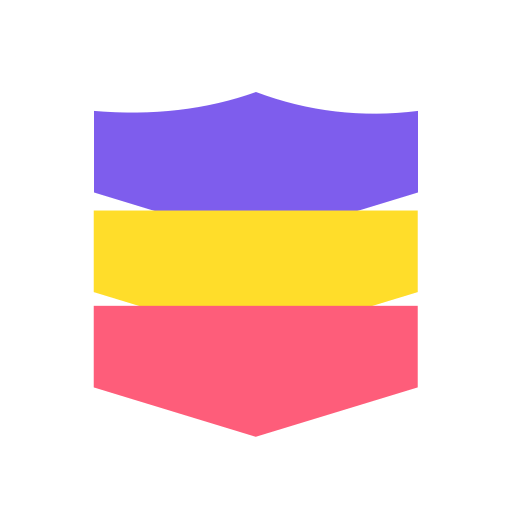how to turn off family sharing if you’re not the organizer
Family sharing is a useful feature for many Apple users, as it allows multiple family members to share purchases, subscriptions, and even data storage. However, there may come a time when you want to turn off family sharing, whether it’s because you are no longer part of the family or you simply no longer want to share your purchases with others. If you’re not the organizer of the family sharing group, you may be wondering how to go about turning it off. In this article, we will guide you through the steps to disable family sharing and answer any questions you may have about this process.
But before we delve into the steps of turning off family sharing, let’s first understand what it is and how it works. Family sharing is a feature introduced by Apple in 2014, which allows up to six family members to share purchases from the App Store, iTunes, and iBooks. It also allows the organizer to create a shared family calendar, share Apple Music and Apple Arcade subscriptions, and even share iCloud storage. This feature is especially useful for families who want to keep track of each other’s purchases and subscriptions and save money by sharing them.
Now that we have a basic understanding of family sharing, let’s move on to the steps to turn it off. The process differs depending on whether you are using an iOS device or a Mac.
If you are using an iOS device, such as an iPhone or iPad, follow these steps:
Step 1: Open the Settings app on your device.
Step 2: Tap on your name at the top of the screen to access your Apple ID settings.
Step 3: Scroll down and tap on “Family Sharing”.
Step 4: You will see a list of all the family members in the sharing group. Tap on your name to access your individual settings.
Step 5: At the top of the screen, you will see a button that says “Stop Using Family Sharing”. Tap on it.
Step 6: A pop-up will appear asking you to confirm your decision to leave the family sharing group. Tap on “Leave”.
Step 7: You will then be asked to confirm your Apple ID password. Enter it and tap on “Turn Off”.
And just like that, you are no longer part of the family sharing group. However, it’s important to note that leaving the family sharing group will also remove you from any shared subscriptions, such as Apple Music or Apple Arcade. If you want to continue using these subscriptions, you will need to have an individual subscription or join a different family sharing group.
If you are using a Mac, the process to turn off family sharing is slightly different. Follow these steps:
Step 1: Open the Apple menu on your Mac and click on “System Preferences”.
Step 2: Click on “Family Sharing”.
Step 3: Click on your name from the list of family members.
Step 4: At the bottom of the screen, click on “Stop Using Family Sharing”.
Step 5: A pop-up will appear asking you to confirm your decision to leave the family sharing group. Click on “Leave”.
Step 6: You will then be asked to confirm your Apple ID password. Enter it and click on “Turn Off”.
Once again, you will no longer be part of the family sharing group and will be removed from any shared subscriptions. It’s important to note that if you are the organizer of the family sharing group, you will not have the option to turn off family sharing. Instead, you will have to remove all family members and then turn it off.
Now, you may be wondering what happens to your purchases and data once you leave the family sharing group. The answer is quite simple – they remain with you. Any purchases or subscriptions that were shared with you will still be accessible to you, and any data stored in your iCloud account will remain intact. The only difference is that you will no longer be able to access the shared purchases and subscriptions from other family members.
But what if you change your mind and want to rejoin the family sharing group later? Is it possible to turn it back on? The answer is yes, you can turn family sharing back on at any time. However, you will need to be invited by the organizer of the group and re-enter the group’s password to join again.
It’s also worth mentioning that turning off family sharing does not affect your ability to share purchases with other individuals outside of the family sharing group. You can still use the “Share with Family” feature to share a specific purchase with someone else, such as a friend or colleague.
In addition to turning off family sharing, you may also want to know how to remove a specific member from the group. This can be useful if you want to remove a family member who no longer uses their Apple ID or if you simply want to downsize the group. To remove a member, follow these steps:
Step 1: Open the Settings app on your iOS device or click on the Apple menu on your Mac and select “System Preferences”.
Step 2: Follow the steps outlined earlier to access the family sharing settings.
Step 3: Find the family member you want to remove and tap on their name.
Step 4: Scroll down and tap on “Remove [name] from Family”.
Step 5: Confirm your decision by tapping on “Remove”.
The member will then be removed from the family sharing group, and all their shared purchases and subscriptions will no longer be accessible to them. However, the person will still be able to access their own purchases and subscriptions.
In conclusion, turning off family sharing is a straightforward process that can be done in just a few steps. Whether you are no longer part of the family or simply want to stop sharing your purchases, following the steps outlined in this article will help you achieve your goal. Just remember that turning off family sharing will remove you from any shared subscriptions, and you will no longer be able to access shared purchases from other family members. But if you change your mind, don’t worry, you can always turn it back on and rejoin the family sharing group.
does it notify when you screenshot on instagram story
In today’s fast-paced society, social media has become an integral part of our daily lives. One of the most popular social media platforms is Instagram , which allows users to share photos, videos, and stories with their followers. With the rise of Instagram ‘s popularity, there has been a growing concern about privacy and security on the platform. One question that often arises is whether Instagram notifies users when someone takes a screenshot of their story. In this article, we will delve into this topic and explore the truth behind this question.
Firstly, it is important to understand what an Instagram story is and how it works. An Instagram story is a temporary post that appears on a user’s profile for 24 hours before disappearing. Users can add photos, videos, and text to their stories, and also have the option to add filters, stickers, and hashtags. Stories have become a popular feature on Instagram, with over 500 million daily active users. They allow users to share their daily activities, thoughts, and experiences with their followers in a more casual and spontaneous manner.
Now, coming back to the main question, does Instagram notify when someone takes a screenshot of your story? The answer is not a simple yes or no. Instagram used to notify users when someone took a screenshot of their story, but this feature was removed in 2018. This was met with mixed reactions from users, with some happy about the increased privacy and others disappointed that they could no longer see who was taking screenshots of their stories.



However, there is a catch. Although Instagram does not notify users when someone takes a screenshot of their story, it does notify users when someone takes a screenshot of their direct messages. This means that if you send a photo or video via direct message and the recipient takes a screenshot, you will receive a notification. This feature was introduced in 2016 and was intended to increase privacy and prevent users from sharing private messages without the sender’s knowledge.
So why did Instagram remove the screenshot notification for stories? The reason behind this decision was to encourage more sharing and engagement on the platform. With the notification feature, users were hesitant to take screenshots of stories, which limited the spread of content and hindered the growth of the platform. By removing this feature, Instagram aimed to make the platform more user-friendly and increase user engagement.
Another factor that played a role in the removal of the screenshot notification was the rise of third-party apps that allowed users to save Instagram stories without the sender’s knowledge. These apps made it possible for users to save stories without leaving a trace, rendering the notification feature on Instagram obsolete.
However, even though Instagram does not notify users when someone takes a screenshot of their story, there are ways to tell if someone has taken a screenshot. If a user has enabled the “Allow Sharing” option for their story, they will receive a notification when someone takes a screenshot. This feature allows users to share their story with others via direct message, and if the recipient takes a screenshot, the sender will be notified. Additionally, if a user has a private account and their story is only visible to their followers, they can easily tell if someone has taken a screenshot because the number of views on their story will decrease.
Now, the question that remains is, should Instagram notify users when someone takes a screenshot of their story? Some argue that this feature would increase privacy and prevent users from sharing their content without permission. On the other hand, others argue that it would hinder the growth and engagement on the platform.
However, it is important to remember that when you post something on a social media platform, you are making it accessible to the public. With that in mind, it is always a good idea to think twice before posting something that you wouldn’t want others to see. If you are concerned about your privacy, you can always set your account to private, which means that only your approved followers can see your posts and stories.
Moreover, Instagram also offers a “Close Friends” feature, which allows users to create a list of their closest friends and share stories exclusively with them. This feature is particularly useful for those who want to maintain a certain level of privacy on their account.
In conclusion, Instagram does not notify users when someone takes a screenshot of their story, but it does notify when someone takes a screenshot of their direct messages. The removal of this feature was intended to increase engagement on the platform, and while it may have its drawbacks, it is ultimately up to the user to be mindful of what they post on social media. With the various privacy options available on Instagram, users can choose to share their content with the public or a select group of friends. It is always important to remember that once something is posted online, it can potentially be seen and shared by anyone.
snapchat grey box
Snapchat has become a household name in the world of social media, with millions of users worldwide. The app, which allows users to send photos and videos that disappear after a few seconds, has taken the world by storm since its launch in 2011. However, there is one feature of Snapchat that has left many users puzzled – the infamous grey box. This grey box, which appears when a user receives a snap, has sparked numerous debates and discussions among Snapchat users. In this article, we will delve deeper into the mystery of the Snapchat grey box and uncover the truth behind it.
To understand the grey box, we first need to understand how Snapchat works. When a user sends a snap, it is encrypted and sent to Snapchat’s servers. The server then sends the snap to the recipient’s device, where it is decrypted and displayed for a few seconds before disappearing. However, if the recipient takes a screenshot of the snap, the sender is notified through a grey box with the message “You took a screenshot!” This notification is Snapchat’s way of alerting the sender that their snap has been saved by the recipient.
Now, you might be wondering why Snapchat chose to use a grey box for this notification. The answer lies in the psychology of color. Grey is a neutral color that is often associated with being calm and emotionless. It is also a color that does not evoke any strong emotional response. By using grey for the notification, Snapchat ensures that the sender does not feel any negative emotions towards the recipient for taking a screenshot. It also conveys a sense of neutrality, allowing the sender to interpret the situation as they please.
The grey box notification has been a subject of much speculation among Snapchat users. Some have argued that the notification is unnecessary and invades the privacy of the recipient. However, Snapchat has defended its decision, stating that the notification is essential for maintaining trust between users. It also serves as a deterrent for those who might try to save and share private snaps without the sender’s consent.
Another aspect of the grey box that has garnered attention is the different shapes and sizes it appears in. In some cases, the grey box might be small and barely noticeable, while in others, it might take up a significant portion of the screen. This variation in size has led to many theories about its significance. Some users believe that the size of the grey box is an indication of how long the recipient viewed the snap before taking a screenshot. However, there is no concrete evidence to support this theory, and Snapchat has not officially commented on it.
It is also worth mentioning that the grey box notification does not appear when a user takes a screenshot of a snap that has been sent to them in a chat conversation. This has led to further confusion among users, with some questioning why the notification is not consistent across all features of the app. However, it is essential to note that the chat feature on Snapchat is designed for long-form conversations, unlike the snaps which are meant to be viewed and then disappear. Therefore, the rules and notifications might differ for these two features.
Another interesting fact about the grey box is that it only appears when a user takes a screenshot. If the recipient uses a third-party app or camera to save the snap, the sender will not be notified. This has raised concerns about the effectiveness of the notification, as users can still save snaps without the sender’s knowledge. However, Snapchat has taken steps to prevent this by continuously updating its app to block third-party apps from accessing snaps.
The grey box notification has also been the subject of many memes and jokes on social media. Some users have found creative ways to incorporate the grey box into their snaps, while others have poked fun at the feature itself. This shows how the grey box has become a part of the Snapchat culture and how users have learned to embrace it, despite the initial confusion and frustration it caused.
In recent years, Snapchat has made some changes to the grey box notification, leading to further speculation and discussions among users. One such change was the addition of a timer to the grey box, indicating the number of seconds the recipient viewed the snap before taking a screenshot. This change has been both praised and criticized by users, with some arguing that it adds unnecessary pressure and judgment to the situation.



Snapchat has also introduced a new feature called “Memories,” which allows users to save their snaps and stories on the app. This feature has raised concerns about the future of the grey box notification, as users can now save snaps without the sender’s knowledge, even after they have disappeared. However, Snapchat has assured users that the grey box notification will remain, and the sender will be notified if their saved snap is re-shared or used in any way.
In conclusion, the Snapchat grey box has been a topic of discussion and speculation among users since its introduction. While some argue that it invades privacy and adds unnecessary pressure, others see it as a necessary tool for maintaining trust and preventing the misuse of private snaps. Regardless of the different opinions, one thing is for sure – the grey box is an integral part of the Snapchat experience and has become a symbol of the app’s unique and innovative features.
